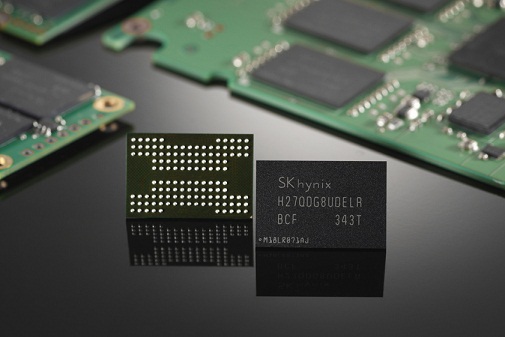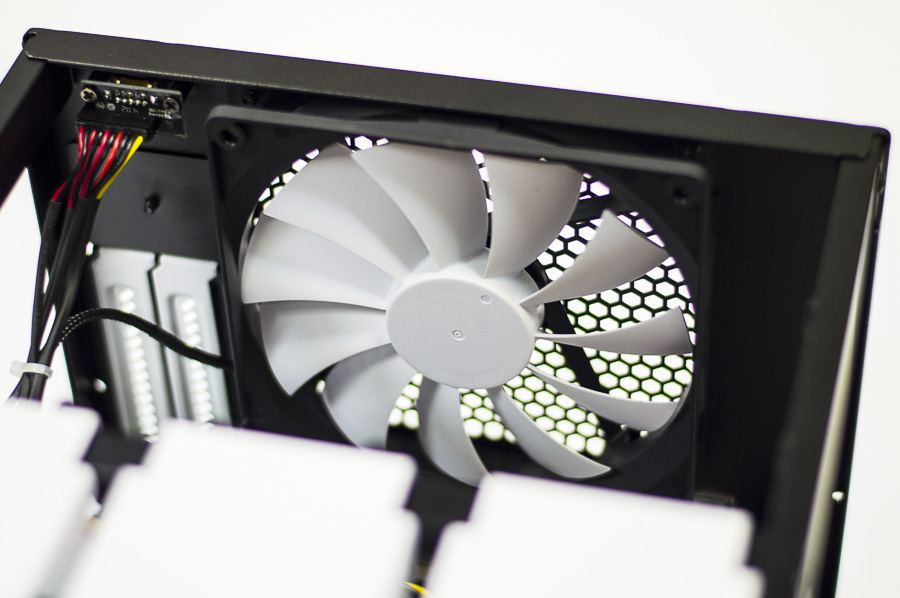5 tips for choosing an SSD
Corporate users often face a dilemma when the question arises of where to store their data and run applications. In many cases, it is necessary to balance the need for fast, reliable, stable storage and a limited budget. From time to time, this leads IT managers to choose low-end SSD drives that fit into the budget. They suggest that the stated speeds and volumes are ideal for any kind of task. But do not rush so.

It is not always advisable to transfer the infrastructure to the entire SSD drive. For example, launching your video portal, you need to allocate 15% of the total amount of stored data for cache. As a result, there is no need to keep all 10TV on SSD disks, but only 1.5TV is enough. The remaining 8.5TV will feel quite comfortable on regular SATA drives. If your project needs frequent dubbing of the database in large volumes, then the use of SSD in 70% of such cases is absolutely not advisable, and it would be wiser to use SAS disks. They will provide you with an acceptable recording speed, the required amount of memory and years of working with the database without purchasing new equipment, which can significantly save. But nevertheless you decided to go by the way of reliability, but not economy.
When choosing an SSD for your environment, there are many factors that need to be considered if you are going to ultimately choose a solution that can adequately meet your needs. Below are five tips to help you choose the SSD that meets the needs of your applications, while saving your budget and preventing a possible headache.
Understand the requirements of your applications.
SSDs have SSDs, right? Absolutely not. In fact, SSDs are built on different technologies to work with different types of workloads. Basically, all modern SSDs are made on NAND chips.

But there are 3 varieties of this memory: SLC, MLC and TLC. Naturally, each of them has its pros and cons.

Various interfaces are also used that provide different throughputs. The most popular among manufacturers are ONFi and Toggle Mode.

It is imperative to understand which applications you intend to work with and their needs for read / write operations before proceeding with the selection. If you do not have this information at hand when selecting equipment, then the chances of acquiring the best equipment are extremely small.
Look at the total cost of ownership (TCO), not the acquisition price
Calculating the TCO for a solid state drive can be a little tricky, but that's not the reason to shy away from it. Choosing a cheaper option is usually more attractive. However, if the disk cannot satisfy your long-term needs and wears out earlier than you expected, you will have to look into your wallet again, incur unforeseen expenses, and also transfer all the data again.
The Storage Networking Industry Association (SNIA) has developed tools that help enterprises and organizations make TCO calculations. Many organizations find it convenient to calculate direct costs, such as acquisition costs, labor, capital costs, because they are relatively easy to measure. However, indirect costs must also be taken into account, namely lifelong energy consumption and cooling, average drive lifespan, replacement cost, maintenance, etc., otherwise there is a risk of huge losses.
When comparing drives, rely on $ / TBW, not $ / GB
When assessing the cost, it is necessary to use an approach that is fundamentally different from the assessment of traditional HDDs. And when you go to the boss to present the selected options, he will surely want to get a lower $ / GB ratio. But this option is not suitable for SSDs due to the limited number of cell overwrites. Therefore, you need to build on the cost of TBW (Total Bytes Written; the total amount of recorded data to disk failure). This will show you how much you will pay for the amount of data that can actually be written to disk before it fails.
Cooling

Cooling your assembly significantly affects your budget. You should pay attention to IOPS / W. The goal should be to achieve the highest performance with the minimum energy required to work with SSDs. Not all SSDs are equal in this regard. Since efficient cooling can help save up to 80 percent of the total energy consumed, this aspect is becoming very important in budget organizations.
Think about reducing and stabilizing latency
Many IT managers opt for SSDs due to the performance benefits that modern applications require. Often a decrease in latency in itself gives the desired result. When considering this parameter, it is very important to look further than a simple measurement of the average response time. Naturally, this value should be as low as possible, but you also need to understand how stable the latency of the SSD is. Does the disk experience sharp increases in latency, or does it still remain in a fairly narrow range? It is always necessary to achieve the most stable latency by all possible means, otherwise your data center will work more slowly than you would like when the SSD “leaves” the latency jump, leaving the data “sit and wait”.

It is not always advisable to transfer the infrastructure to the entire SSD drive. For example, launching your video portal, you need to allocate 15% of the total amount of stored data for cache. As a result, there is no need to keep all 10TV on SSD disks, but only 1.5TV is enough. The remaining 8.5TV will feel quite comfortable on regular SATA drives. If your project needs frequent dubbing of the database in large volumes, then the use of SSD in 70% of such cases is absolutely not advisable, and it would be wiser to use SAS disks. They will provide you with an acceptable recording speed, the required amount of memory and years of working with the database without purchasing new equipment, which can significantly save. But nevertheless you decided to go by the way of reliability, but not economy.
When choosing an SSD for your environment, there are many factors that need to be considered if you are going to ultimately choose a solution that can adequately meet your needs. Below are five tips to help you choose the SSD that meets the needs of your applications, while saving your budget and preventing a possible headache.
Understand the requirements of your applications.
SSDs have SSDs, right? Absolutely not. In fact, SSDs are built on different technologies to work with different types of workloads. Basically, all modern SSDs are made on NAND chips.

But there are 3 varieties of this memory: SLC, MLC and TLC. Naturally, each of them has its pros and cons.

Various interfaces are also used that provide different throughputs. The most popular among manufacturers are ONFi and Toggle Mode.

It is imperative to understand which applications you intend to work with and their needs for read / write operations before proceeding with the selection. If you do not have this information at hand when selecting equipment, then the chances of acquiring the best equipment are extremely small.
Look at the total cost of ownership (TCO), not the acquisition price
Calculating the TCO for a solid state drive can be a little tricky, but that's not the reason to shy away from it. Choosing a cheaper option is usually more attractive. However, if the disk cannot satisfy your long-term needs and wears out earlier than you expected, you will have to look into your wallet again, incur unforeseen expenses, and also transfer all the data again.
The Storage Networking Industry Association (SNIA) has developed tools that help enterprises and organizations make TCO calculations. Many organizations find it convenient to calculate direct costs, such as acquisition costs, labor, capital costs, because they are relatively easy to measure. However, indirect costs must also be taken into account, namely lifelong energy consumption and cooling, average drive lifespan, replacement cost, maintenance, etc., otherwise there is a risk of huge losses.
When comparing drives, rely on $ / TBW, not $ / GB
When assessing the cost, it is necessary to use an approach that is fundamentally different from the assessment of traditional HDDs. And when you go to the boss to present the selected options, he will surely want to get a lower $ / GB ratio. But this option is not suitable for SSDs due to the limited number of cell overwrites. Therefore, you need to build on the cost of TBW (Total Bytes Written; the total amount of recorded data to disk failure). This will show you how much you will pay for the amount of data that can actually be written to disk before it fails.
Cooling

Cooling your assembly significantly affects your budget. You should pay attention to IOPS / W. The goal should be to achieve the highest performance with the minimum energy required to work with SSDs. Not all SSDs are equal in this regard. Since efficient cooling can help save up to 80 percent of the total energy consumed, this aspect is becoming very important in budget organizations.
Think about reducing and stabilizing latency
Many IT managers opt for SSDs due to the performance benefits that modern applications require. Often a decrease in latency in itself gives the desired result. When considering this parameter, it is very important to look further than a simple measurement of the average response time. Naturally, this value should be as low as possible, but you also need to understand how stable the latency of the SSD is. Does the disk experience sharp increases in latency, or does it still remain in a fairly narrow range? It is always necessary to achieve the most stable latency by all possible means, otherwise your data center will work more slowly than you would like when the SSD “leaves” the latency jump, leaving the data “sit and wait”.
